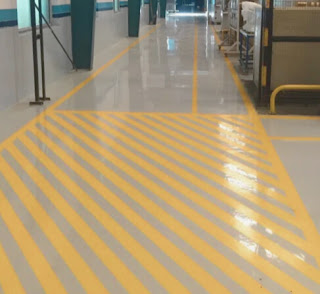What Is ESD Flooring? Everything You Need to Know
But what exactly is ESD flooring, how does it work, and where should it be used? Here’s everything you need to know. In industries where sensitive electronic components are handled, or environments where flammable materials are present, preventing electrostatic discharge is critical. One of the most effective ways to control static electricity is through ESD flooring. This specialized flooring helps protect equipment, products, and people by grounding static charges before they can cause damage.
What Does ESD Mean?
ESD stands for Electrostatic Discharge—a sudden transfer of electricity between two objects with different electrical potentials. In everyday life, a small static shock might be annoying. In industrial or technical environments, however, that same discharge can ruin electronic equipment or even ignite flammable substances.
ESD flooring is specifically engineered to reduce or eliminate this risk by allowing electrical charges to dissipate safely into the ground.
How ESD Flooring Works
Unlike regular flooring, ESD flooring contains conductive or dissipative materials that create a low-resistance path for static electricity to travel. It directs these charges away from people and equipment and into a grounding system.
The effectiveness of the floor is measured in ohms (Ω), typically falling within a specific range (10⁶ to 10⁹ Ω) depending on whether it's classified as conductive or static-dissipative. In either case, the goal remains the same—safe discharge of static electricity without causing a spark or damaging equipment.
ESD Flooring vs. Anti-Static Flooring
While often confused, ESD flooring is not the same as anti-static flooring. Anti-static floors help prevent static buildup but do not provide a path to ground. ESD flooring goes a step further by not only preventing charge accumulation but also ensuring that any built-up charges are actively conducted to the ground.
This makes ESD flooring the superior choice in environments that require strict static control.
Where Is ESD Flooring Used?
ESD flooring is essential in environments where static discharge can cause harm, such as:
Electronics manufacturing and assembly – Prevents damage to microchips and sensitive components.
Data centers and server rooms – Protects critical infrastructure from electrical surges.
Cleanrooms and laboratories – Maintains contamination-free environments while protecting devices.
Pharmaceutical and biotech facilities – Ensures safety in controlled manufacturing areas.
Aerospace and defense industries – Reduces the risk of failure in mission-critical systems.
Even warehouses or facilities handling flammable chemicals benefit from installing ESD flooring due to its static suppression capabilities.
Benefits of ESD Flooring
1. Equipment Protection
The most important benefit of ESD flooring is that it protects sensitive electronic devices from static damage. Just one electrostatic discharge can destroy a microchip or corrupt data.
2. Safety Assurance
In environments with volatile gases or fine powders, a static spark can cause an explosion. ESD flooring reduces that risk significantly.
3. Compliance with Industry Standards
Many industries require compliance with static control standards such as ANSI/ESD S20.20. Installing certified ESD flooring helps meet these requirements and avoids regulatory penalties.
4. Durability and Low Maintenance
Most ESD floors, especially those made from epoxy or vinyl, are built to last. They resist wear, are easy to clean, and maintain their conductive properties over time with proper care.
5. Professional Appearance
Beyond its functionality, ESD flooring can be customized in various colors and finishes to create a clean, professional appearance. This is useful in office-adjacent labs or production spaces with client visibility.
Types of ESD Flooring
There are several options to consider when selecting ESD flooring:
ESD Vinyl Tiles or Sheets – Ideal for retrofits and cleanrooms. They offer good conductivity and are easy to install.
ESD Epoxy Coatings – Seamless, durable, and suitable for large manufacturing areas.
ESD Rubber Flooring – Comfortable underfoot and ideal for areas where standing work is frequent.
ESD Carpet Tiles – Typically used in offices or control rooms where aesthetics and static protection are both important.
Each type offers different benefits, so the right choice depends on the operational needs and environment.
Installation and Maintenance
Proper installation is essential to ensure the effectiveness of ESD flooring. It must be connected to a grounding system and tested for conductivity. The subfloor must be clean, dry, and level before installation.
Maintenance should include cleaning with non-wax, ESD-safe cleaners. Using regular floor polish or wax can reduce conductivity, defeating the purpose of the floor.
Routine testing (monthly or quarterly) ensures the flooring continues to perform within the required resistance range.
Final Thoughts: In today's technology-driven world, preventing electrostatic discharge is not optional—it’s a necessity. ESD flooring offers a reliable, long-term solution that protects sensitive equipment, enhances safety, and ensures regulatory compliance.
If your business handles electronics, pharmaceuticals, or operates in an environment prone to static buildup, investing in ESD flooring is a proactive step toward protecting your assets and employees.



Comments
Post a Comment